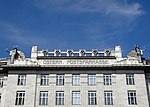Asgardia

Asgardia, also known as the Space Kingdom of Asgardia and Asgardia the Space Nation, is a micronation formed by a group of people who have launched a satellite into Earth orbit. They refer to themselves as "Asgardians" and they have given their satellite the name "Asgardia-1". They have declared sovereignty over the space occupied by and contained within Asgardia -1. The Asgardians have adopted a constitution and they intend to access outer space free of the control of existing nations and establish a permanent settlement on the Moon by 2043.Igor Ashurbeyli, the founder of the Asgardia Independent Research Center, proposed the establishment of Asgardia on 12 October 2016. The Constitution of the Space Kingdom of Asgardia was adopted on 18 June 2017 and it became effective on 9 September 2017. Asgardia's administrative center is located in Vienna, Austria.The Cygnus spacecraft that carried Asgardia-1 into space released Asgardia-1 and two other satellites on 12 November 2017. The Space Kingdom of Asgardia has claimed that it is now "the first nation to have all of its territory in space." Legal scholars doubt that Asgardia-1 can be regarded as a sovereign territory and Asgardia has not yet attained the goal of being recognised as a nation state.
Excerpt from the Wikipedia article Asgardia (License: CC BY-SA 3.0, Authors, Images).Asgardia
Stubenring, Vienna Innere Stadt
Geographical coordinates (GPS) Address Phone number Website Nearby Places Show on map
Geographical coordinates (GPS)
| Latitude | Longitude |
|---|---|
| N 48.210861111111 ° | E 16.382166666667 ° |
Address
Urania Apotheke
Stubenring 2
1010 Vienna, Innere Stadt
Austria
Open on Google Maps










